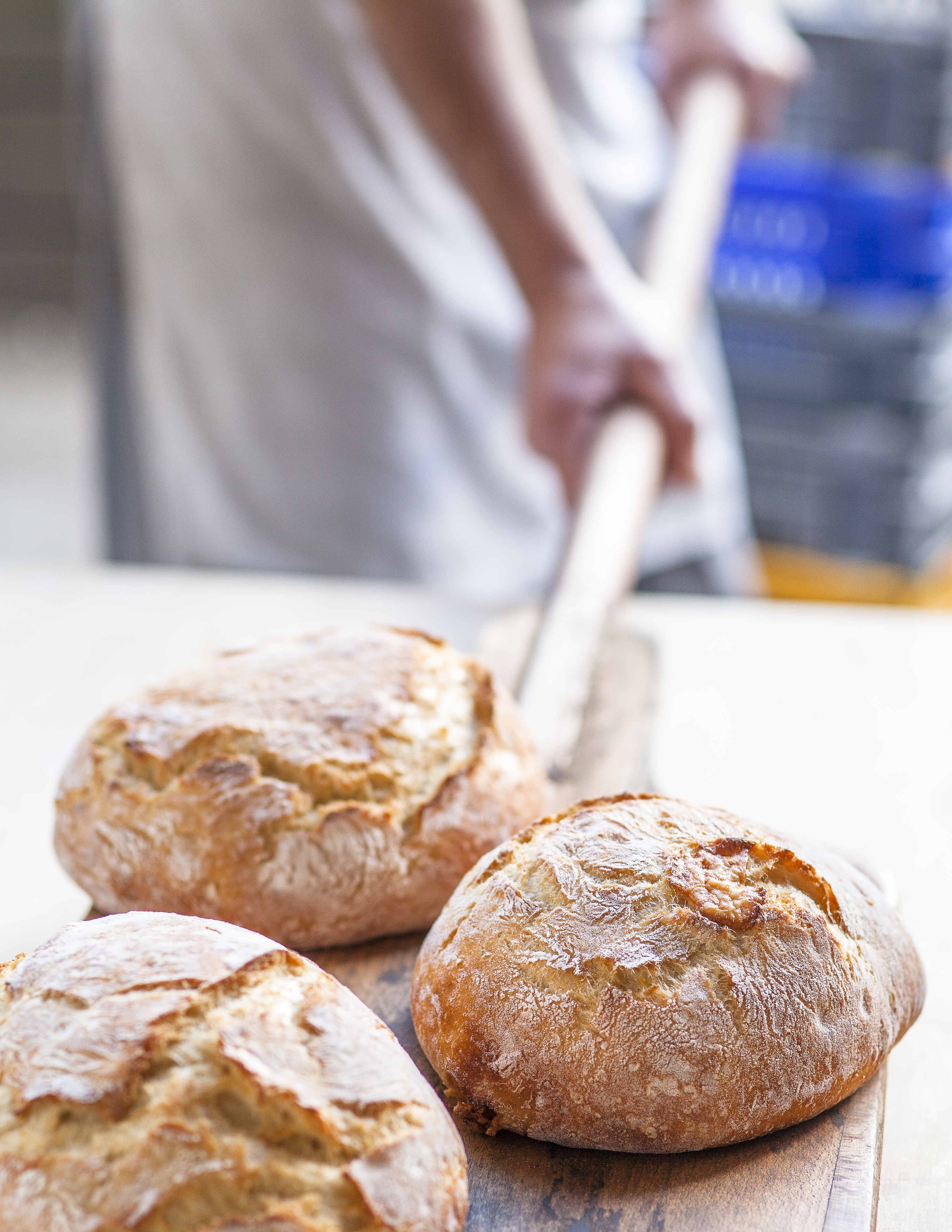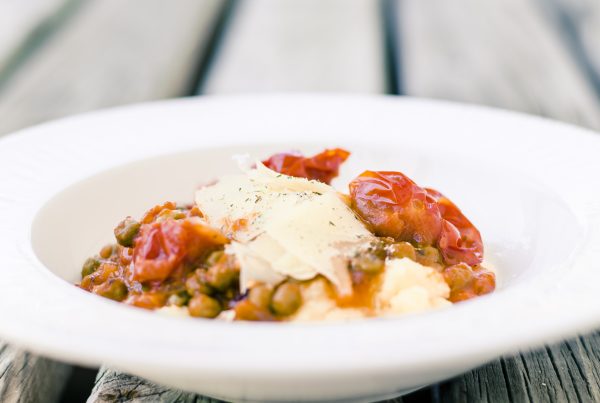
Polenta and Parmesan loaf
Ingredients
Polenta
- 60g polenta (I like coarse polenta, or corn grits)
- 240ml water
Dough
- 12g fresh yeast (or 4g dried yeast)
- 290ml water
- 545g high-grade flour
- 18g salt
- 50g Parmesan, cubed
Method
- The day before, bring the water to the boil and add the polenta — if using instant polenta, cook for 3 minutes from boiling, or if using traditional polenta, cook for about 35 minutes or 18 minutes in the microwave. Store in a sealed container after cooking, to prevent a dry skin from forming, and keep at room temperature so you don’t chill the dough when you add it the next day.
- The next day, make the dough. Pour the water into a bowl and break in the fresh yeast, or sprinkle in the dried yeast if using.
- Add the flour and salt, then whisk with a coarse whisk or beat with a spoon until smooth-looking (this will be a workout if you are doing it by hand). Alternatively, toss it in a mixer with a hook and run on a medium speed. The resulting dough will be quite sticky.
- Break the polenta into the dough and mix until stretchy. Allow it to sit covered for 45 minutes in an oiled flat dish.
- Spread the Parmesan cubes over the dough and fold in. Rest the dough for another 20 minutes, then shape it gently into two round loaves (if you mould the dough too firmly, the Parmesan will pop out the sides).
- Place the loaves seam down on a well-floured board, cover with a tea towel and sit on top of the oven for 15–20 minutes.
- While the loaves are rising, preheat the oven to 220˚C. Use a bread stone if you have one, otherwise leave a steel baking/drip catcher in the oven.
- Once the loaves are ready to bake, turn them so the seam is facing up and slide them onto the tray in the oven.
- Reduce the heat to 190˚C after 10 minutes and bake for another 25 minutes. Cool on a wire rack.
If you are keen
Make one-quarter of the dough the day before without the polenta. Let it rise for an hour, then store it in the fridge overnight. The next day, make the other three-quarters of the dough with all the ingredients and proceed as above. Enjoy!
Makes two loaves





